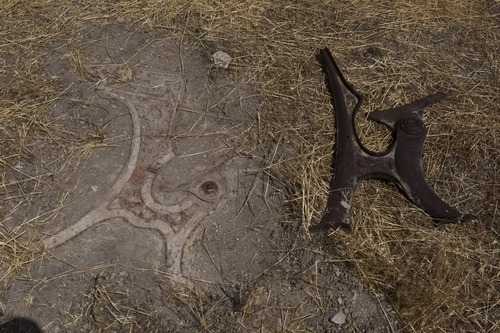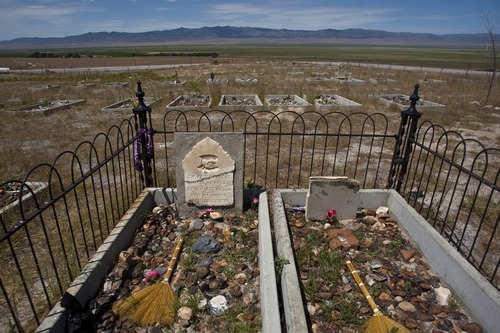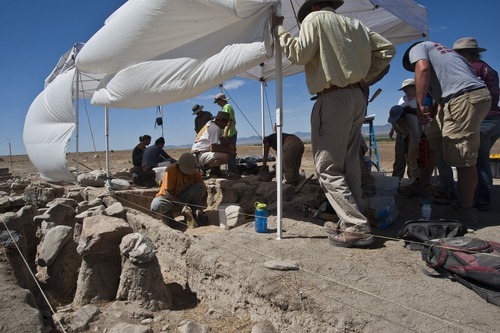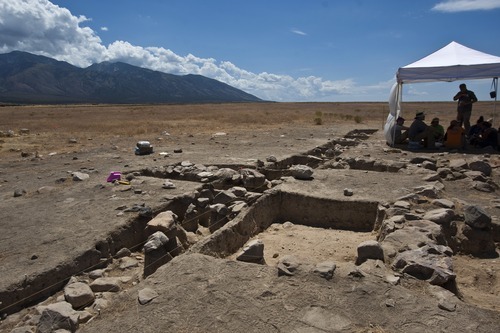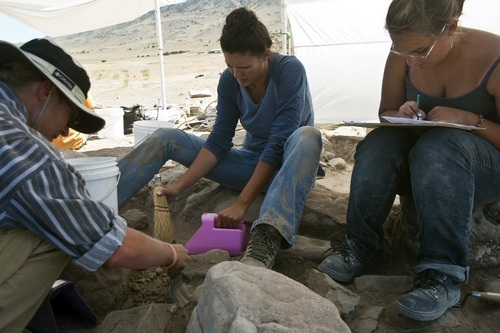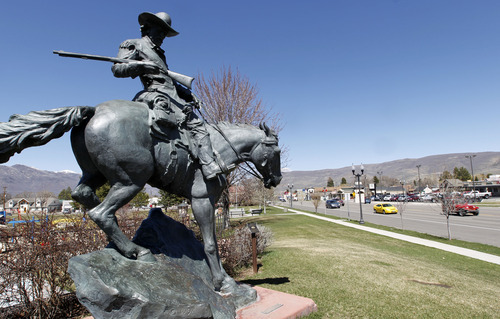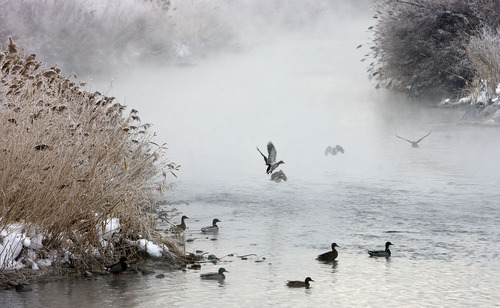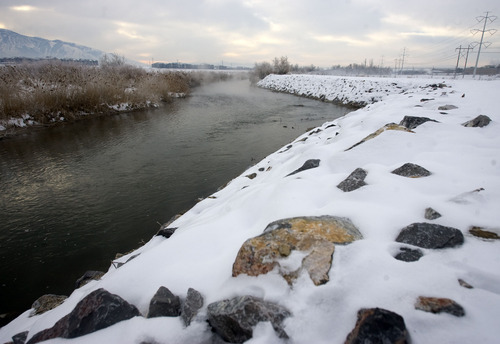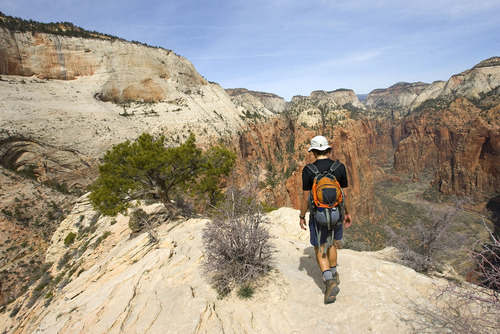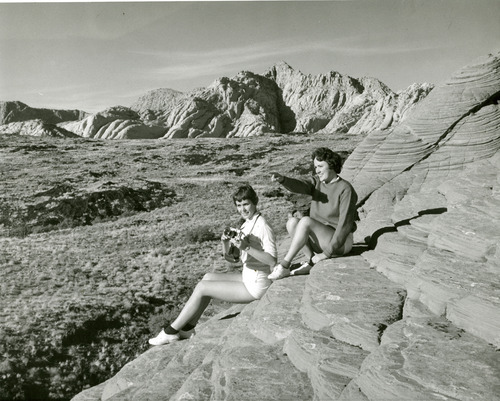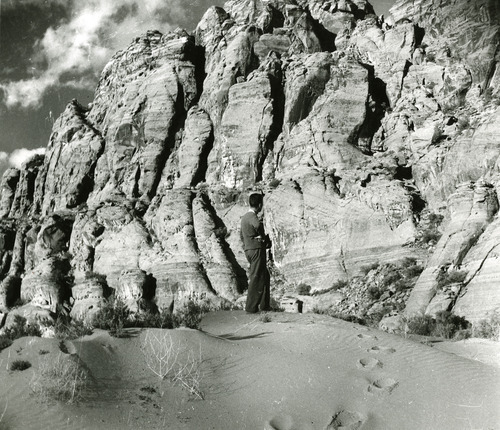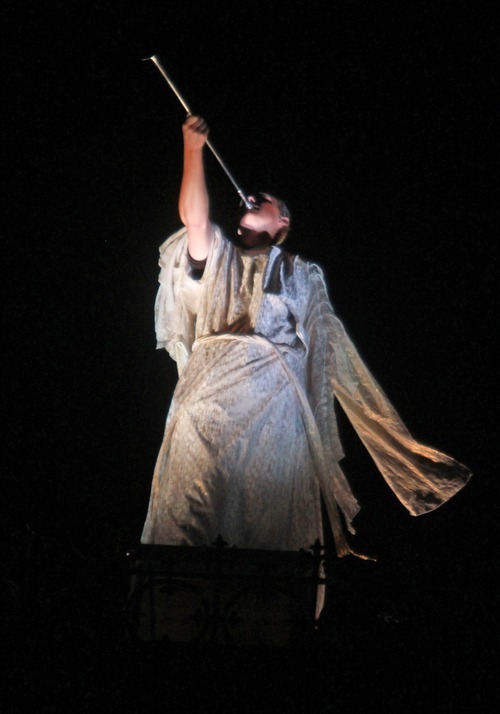This is an archived article that was published on sltrib.com in 2012, and information in the article may be outdated. It is provided only for personal research purposes and may not be reprinted.
Almost every state in the nation has a town named Washington, Springfield or Greenville.
But how many states, other than Utah, have a place called Moroni?
When Mormon pioneers pulled their wagons here 165 years ago, they brought with them hopes for religious freedom, dreams of a model society and a young theology. In many cases, they named the places they settled in honor of their beliefs.
They named them after important figures in ancient and recent Church of Jesus Christ of Latter-day Saints history.
"It points to the importance of religion to those people who were naming the places," said Kent Powell, a historian with the Utah State Historical Society.
In the following, Powell and Philip Barlow, professor of religious studies at Utah State University, discuss the origins of some Utah place names — the well-known and the obscure.
Bountiful, Davis County
In general, the word bountiful means abundant.
In the Book of Mormon, the LDS Church's signature scripture, it refers to two ancient cities.
One city was in the Old World and one in the New, Barlow said. The First Book of Nephi suggests that the Old World Bountiful was a lush, coastal land with "much fruit and also wild honey." It was where Book of Mormon patriarch and prophet Lehi and his family temporarily lived before building their ship for their voyage to the Americas.
In the New World, Barlow said, Bountiful was a place the resurrected Christ visited — as detailed in the Book of Mormon.
The Utah town was settled shortly after the first Mormon pioneers arrived, and it was officially named Bountiful in 1855, according to Powell's Utah History Encyclopedia.
"Bountiful," Powell said, "was a real special place in the Book of Mormon."
Today, it's home to more than 42,000 souls.
Iosepa, Tooele County
Iosepa was established in 1889 in Utah's Skull Valley.
It was nearly deserted by 1917.
The now-ghost town was created as a community for Hawaiian Mormons immigrating to Utah to be closer to the seat of their LDS faith.
Iosepa means Joseph in Hawaiian and was named for LDS founder Joseph Smith and for one of his prophet successors, Joseph F. Smith, who began work as a missionary on the islands in 1854, according to the encyclopedia.
At one point, more than 200 mostly Hawaiian residents called the community home.
Ultimately, they returned to the islands, where a Hawaiian LDS Temple was under construction at the time. Economic difficulties, leprosy and a more extreme climate than the one to which they were accustomed ultimately led partly to their exit.
Jordan River
This river, which flows northward for 40 milesfrom Utah Lake to the Great Salt Lake, was named the Western Jordan in 1847 by Heber C. Kimball shortly after he arrived in Utah, according to the encyclopedia.
Kimball, a Mormon leader, named it such because it reminded him of the Holy Land's River Jordan, which he described as a river flowing from "a freshwater lake through fertile valleys to a dead sea." It wasn't long before "Western" dropped from the Utah river's name.
Workers also used the river to float granite blocks to Salt Lake City during construction of the Salt Lake Temple.
Zion National Park
About 800 to 1,500 years ago, the ancient Puebloanmade their homes among the towering red cliffs of what's now one of the country's most famous national parks. After that, Paiute Indians lived there, calling the canyon Mukuntuweap, according to the encyclopedia.
But Isaac Behunin, that southwestern Utah area's first Mormon resident, named it Zion Canyon, and the moniker stuck. He built his one-room log cabin by what's now the Zion Lodge.
Barlow said Zion means many things to many people. To Mormons, it can mean a specific place, or it can refer to the idea of building God's kingdom. More broadly, according to LDS scripture, in can be where the "pure in heart" dwell.
Manti, Sanpete County
In the fall of 1849, more than 200 Mormon men, women and children left Salt Lake City to settle this still-small town at the direction of Brigham Young, according to the encyclopedia.
Young named the town in 1850 after a place in the Book of Mormon. It's mentioned several times in that scripture, specifically in the Book of Alma, with refers to a "hill of Manti" and "borders of Manti," Barlow said.
Manti, with a population of 3,300, is home to the third LDS temple built in Utah and a popular summer pageant that tells Mormonism's story.
Nephi, Juab County
This small central Utah town of 5,400 people was named after Nephi, the stalwart son of the Book of Mormon's Lehi.
According to that book, Lehi had six sons who ultimately split into two groups after arriving in the new world: Nephites and Lamanites.
Initially, the Nephites were righteous and the Lamanites were wicked and rebellious, Barlow said. Eventually, the Lamanites destroyed the Nephites after both groups fell into depravity.
Moroni, Sanpete County
There's much more to the name Moroni than just the gold-leafed statues atop Mormon temples across the globe.
In the Book of Mormon, the most-well known Moroni was the son of an ancient Nephite general and prophet, named, well, Mormon. Mormon lamented the corruption among his people but decided to remain loyal to them, leading Nephite armies. Ultimately, his troopswere defeated and he was one of the last men standing, Barlow said. He then acted as a sort of editor, collecting records of his people. Before Mormon died, he charged his son, Moroni, with protecting the records.
About 1,400 years later, as the story goes, Moroni appeared before Joseph Smith as an angel, directing him to retrieve the records inscribed on plates.
A lesser-known, but still prominent, Moroni in the Book of Mormon was a righteous and fiery military captain who rallied and inspired Nephite troops.
Heber City, Wasatch County
Most of the original settlers of this northern Utah community journeyed to the United States from England after being converted by Heber C. Kimball, a 19th-century church leader.
Kimball, who went on eight missions for the church, ultimately worked as first counselor to Brigham Young. The first Mormon residents of Heber City named the area in his honor.
Today, Heber City's lush green pastures are increasingly giving way to residential and commercial development with a population of 11,000-plus and counting.
Snow College, Ephraim
This publiccollege got off to a shaky start in the late 1800s.
The school, originally called Sanpete Stake Academy, was built with local donations and struggled to survive financially during its earliest years, according to the encyclopedia.
Principal Newton E. Noyes sought help from the LDS Church. Then-Church President Lorenzo Snow agreed to give the school $2,000. In thanks, the school was renamed Snow College after the Mormon prophet and his good friend Erastus Snow, also an LDS leader. Snow College officially became a state college in 1932.
Twitter: @lschencker


